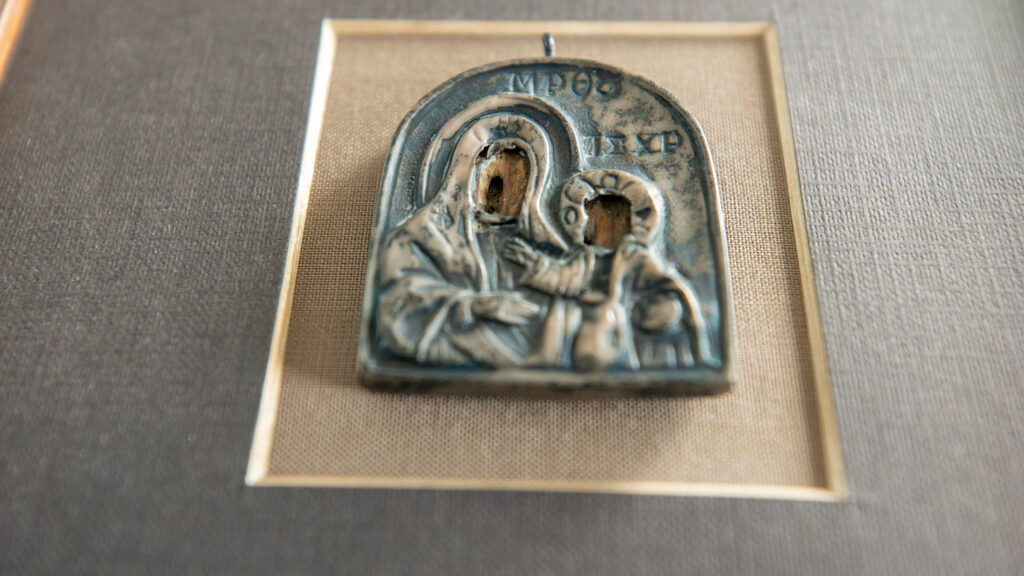
In 1944, Kassiani Kalamakidou married Spyros Vafeiadis, a doctor hailing from Constantinople. The couple had four children. When Kassiani gave birth to her second daughter, Eri (Ermofili), her mother gave her a small icon of the Virgin Mary as Liberator. The icon was a gift to celebrate Kassiani’s birth in Bor in 1922 and was brought over to Greece to protect the little girl.
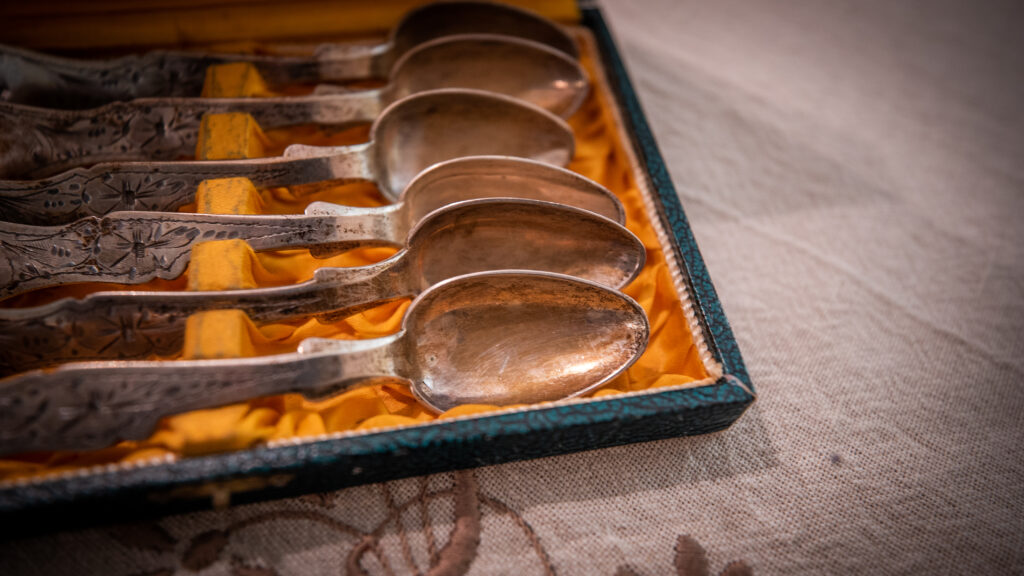
Anastasia Ktypiadou met Ioakeim Prokopoglou at her father’s, Ioannis, grocery store and soon their acquaintance became a budding romance. Sadly, the couple was temporarily driven apart by the end of the Greco-Turkish war and the ensuing population exchange agreement, with Anastasia remaining in Constantinople, as her family was exempt from the population exchange, while Ioakeim
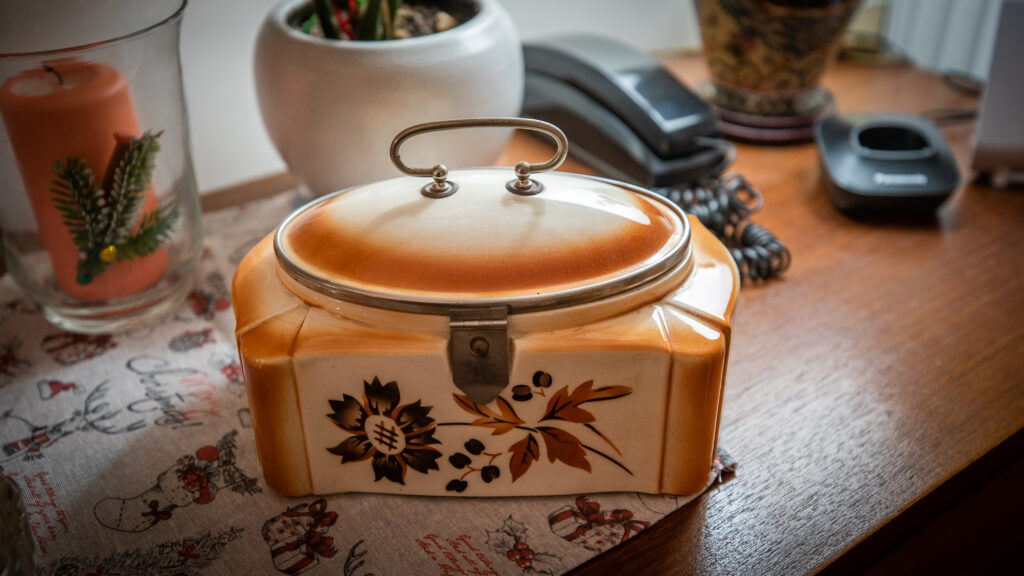
The population exchange could not stand in the way of Ioakeim and Anastasia’s love. As soon as Ioakeim made it to Greece, he wrote to Anastasia and they kept in touch. Four years later, in 1928, the couple got engaged in a letter, exchanging love vows in writing. Anastasia’s family in Constantinople celebrated the engagement by offering wedding favours to relatives and friends. Anastasia had one of these wedding favours in her luggage when she disembarked in Piraeus in 1929 and the couple got married in 1930.
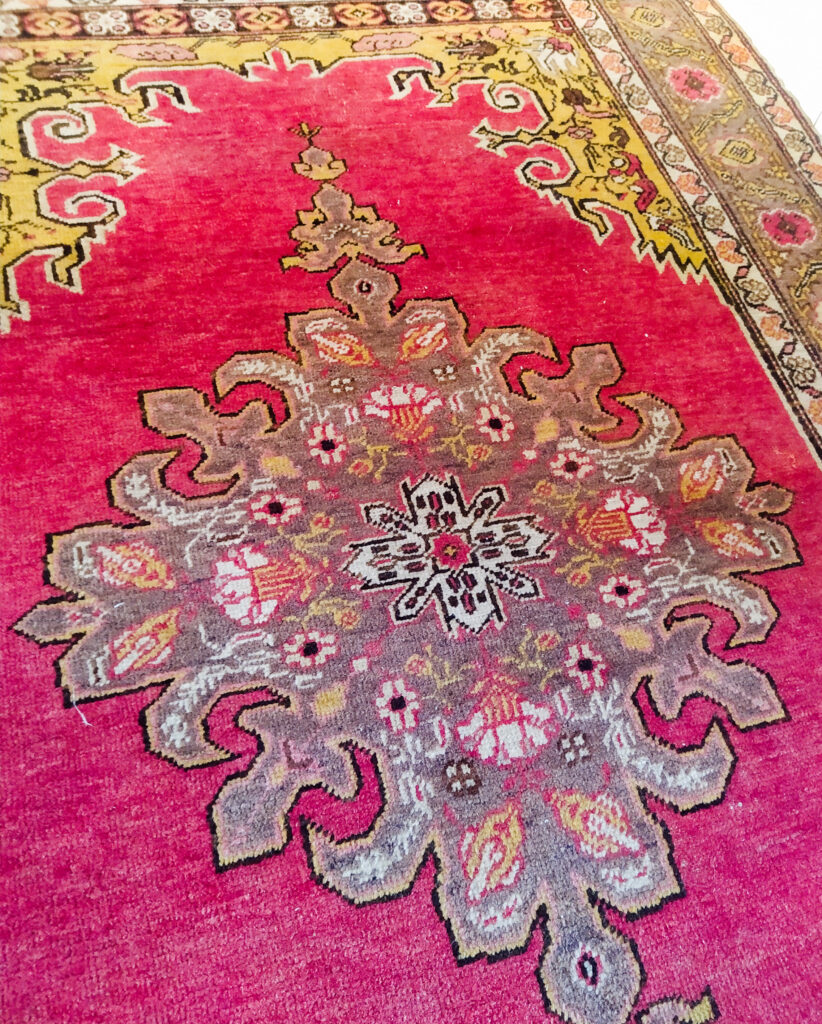
Grandma Despoina’s handmade carpet was one of the few objects she had brought with her from Sinasos and is still in use today, in the living room of her great-granddaughter, Anastasia Sarantari. Its vibrant colours and bold shapes remain impressive even after all these years.
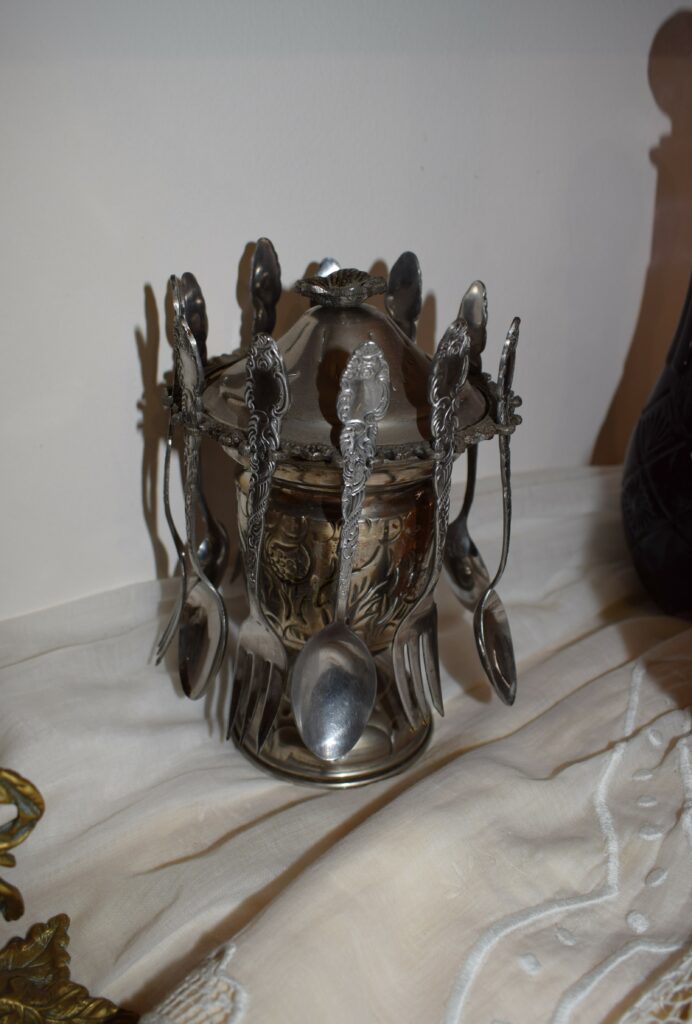
The most distinctive household items kept by the ‘Agios Polykarpos’ Brotherhood of Asia Minor Greeks of Chania in the ‘House of Asia Minor Greeks’ are probably a cutlery set and a pair of door handles.
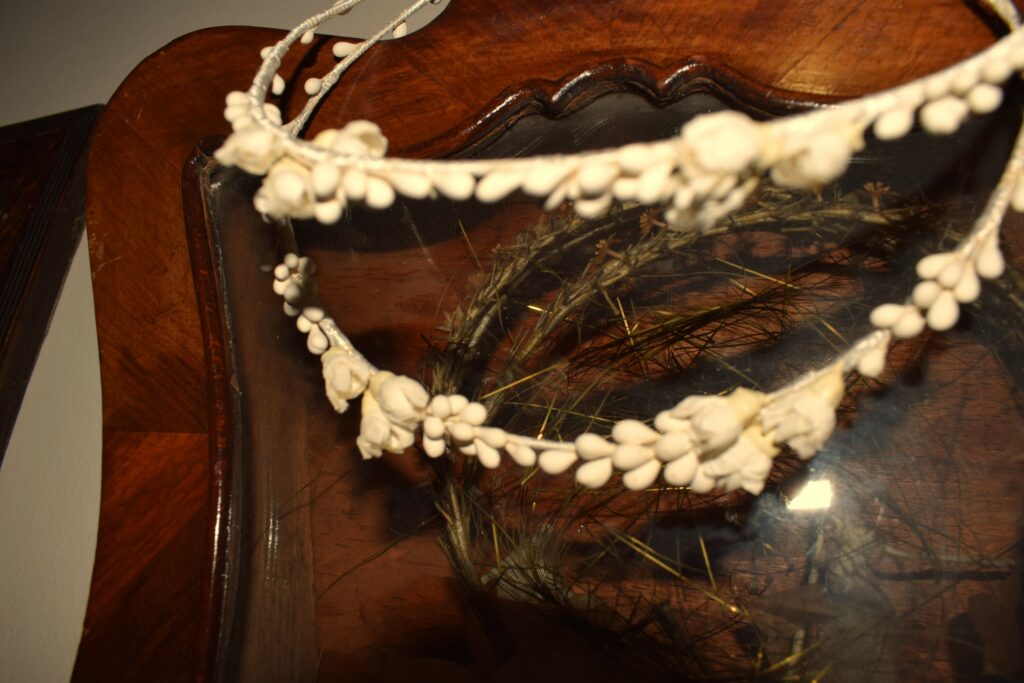
Two refugee families have donated the wedding wreaths brought over by their ancestors to the ‘House of Asia Minor Greeks’, a space where refugee keepsakes are exhibited by the ‘Agios Polykarpos’ Brotherhood of Asia Minor Greeks of Chania. One pair of wreaths is still in its display, which bears the initials ‘M.-E.’, while the second pair has survived tied up with its original ribbons.
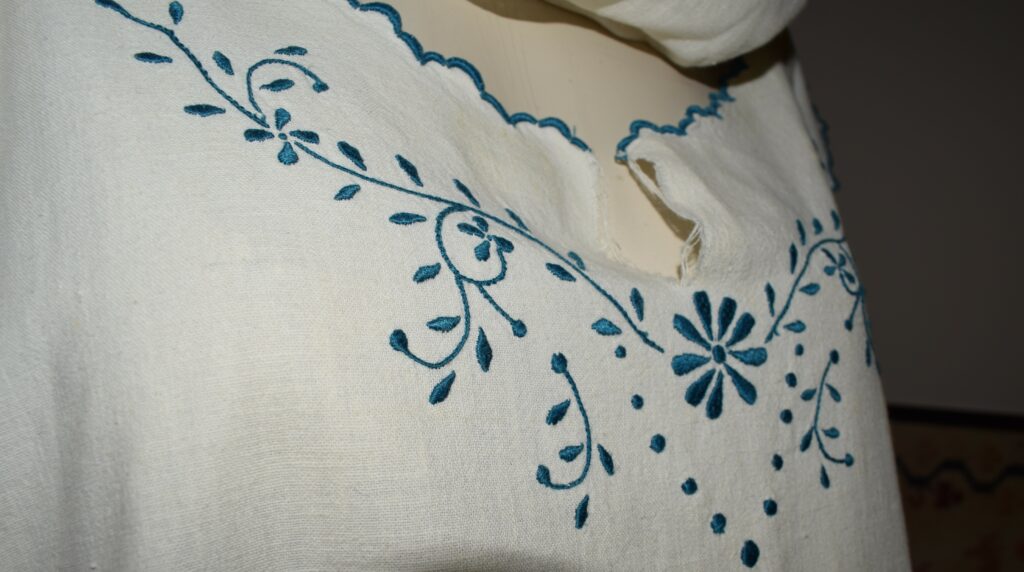
Nightgowns, dresses, linen were donated as keepsakes to the ‘House of Asia Minor Greeks’ established in Chania by the ‘Agios Polykarpos’ Brotherhood of Asia Minor Greeks of Chania. These clothing items, their white yellowed by wear and the passage of time, are now carriers of refugee memory from Asia Minor.
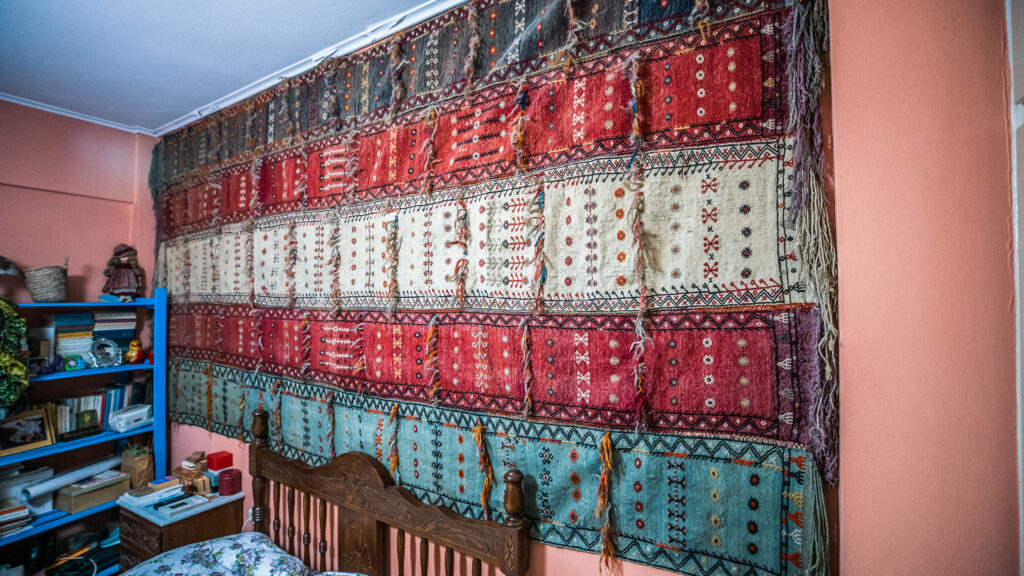
‘Kiz kilim. Bought in Thessaloniki in 1924 from an elderly Asia Minor refugee. Part of a dowry. It was the custom back then for all the friends of the bride to weave a kilim to which each friend would add some adornment as a memento; a piece of her dress, a lock of her hair, a feather from her favourite bird, a lucky charm.’ This short note handwritten by Chrysiida (Lou) Pierrakou (née Vatikioti) records the origins of this handmade rug and the starting point of its long journey.
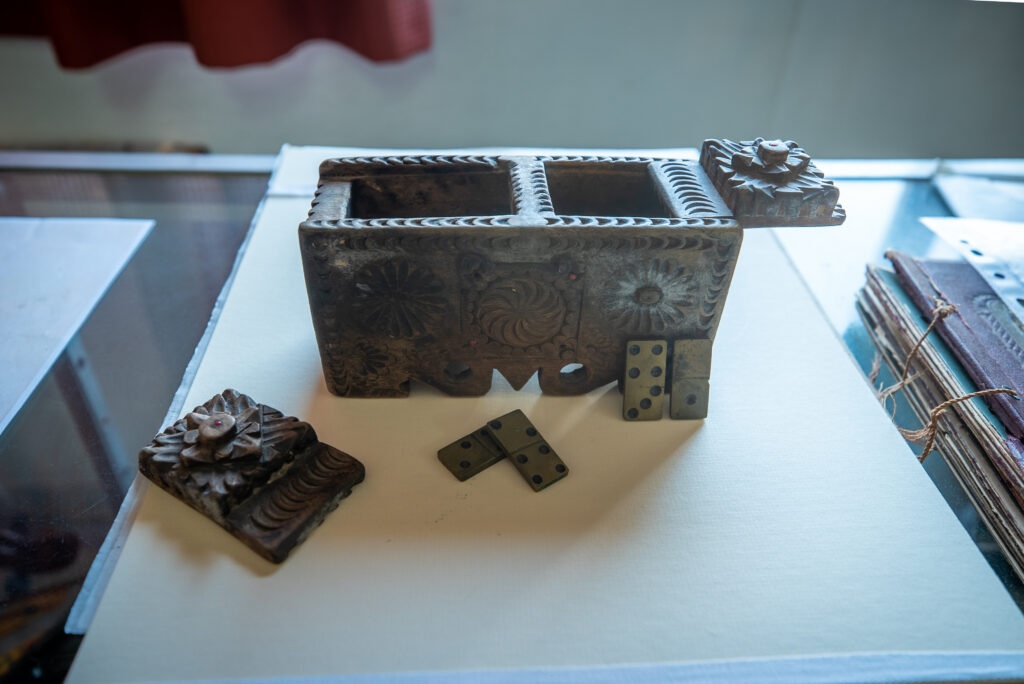
The two wooden domino sets displayed in the small museum of the ‘Nea Sinasos’ Association were brought to Greece by exchangeable refugees. Choosing to carry a game on a journey of displacement, alongside other, more practical and valuable items, might appear incomprehensible to us, especially since we don’t know who the original owners were or, most importantly, why they made this choice.
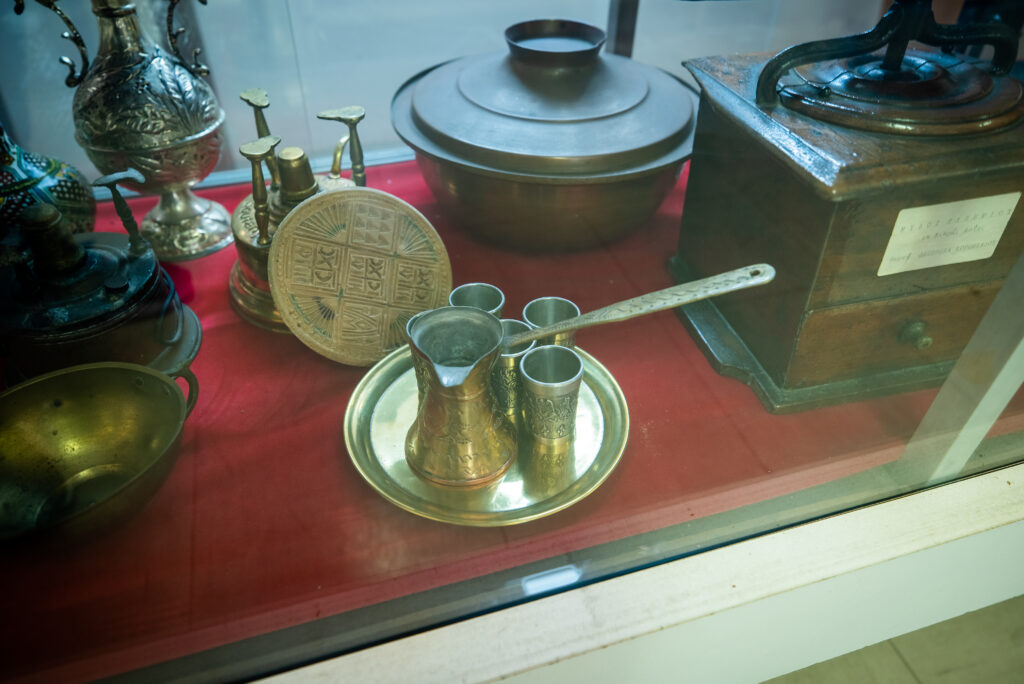
The refugees from Sinasos, just like all refugees who left their homes in a more organised fashion due to the population exchange agreement, filled their bundles and chests with items of high material or emotional value as well as objects they thought would prove useful. Household items could fall under any of these categories. Coffee cups, coffee pots, grinders, plates, glasses, cutlery, bronze bowls and platters were the most common everyday objects that still survive in the houses of refugee descendants.









